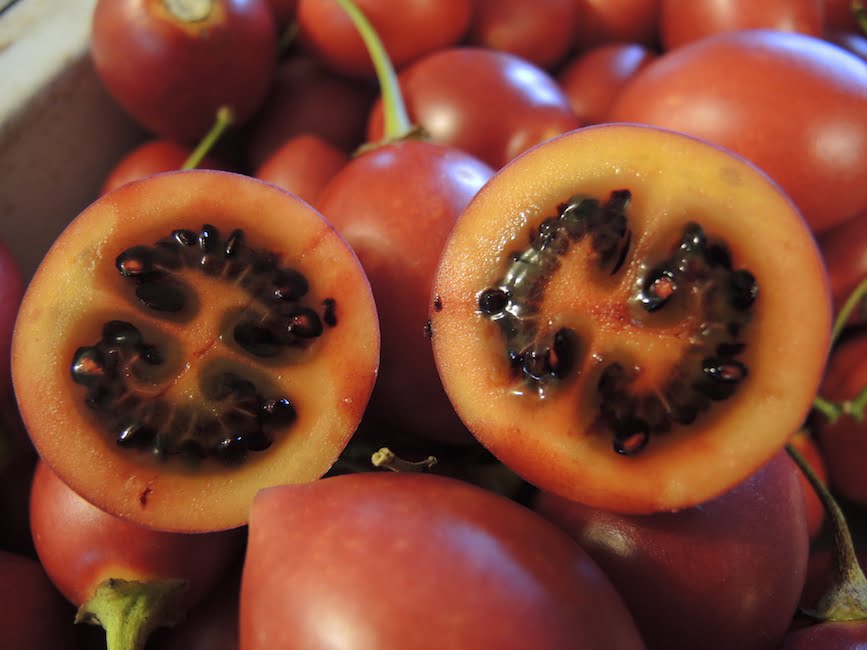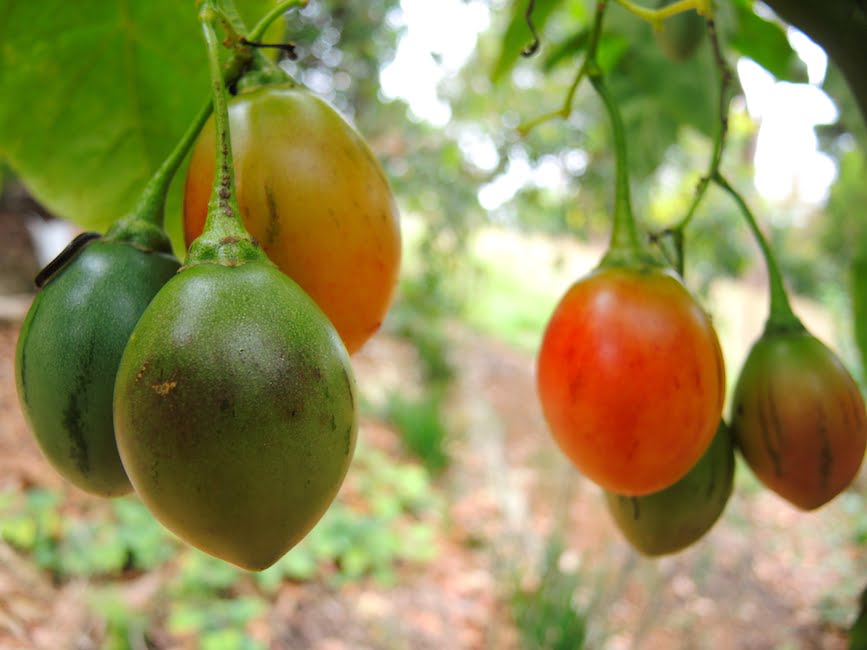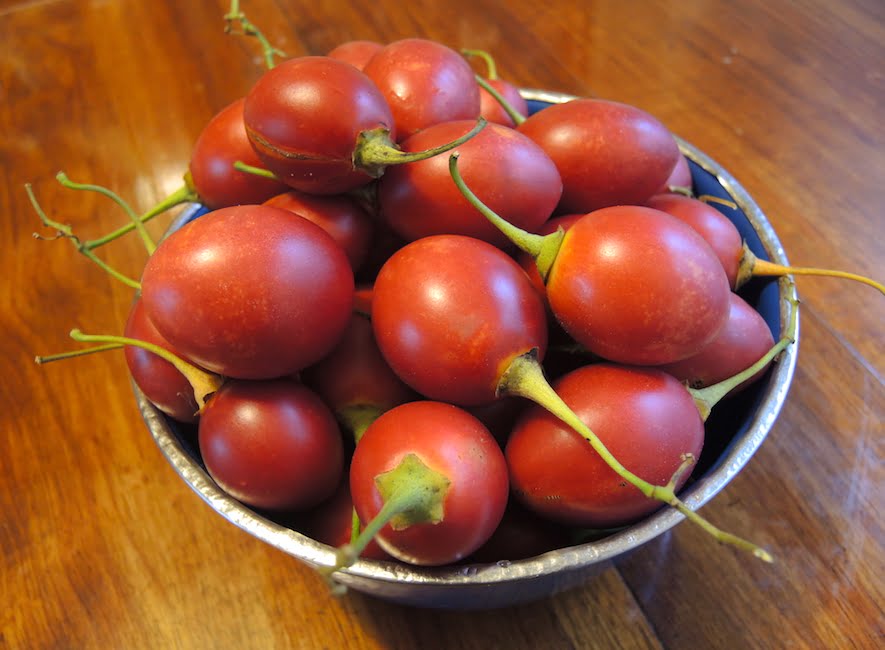The tamarillo (Cyphomandra betacea) must surely be the most under-rated and under-planted fruit tree in my region… and yet it is unfussy, extremely fast-growing and bears delicious fruit (peel the rind after dunking in boiling water for 3 minutes, or halve fresh and scoop out the inside). The red cultivars are tart – ideal for preserves, pies, salads and desserts, whereas the orange ones are lovely eaten fresh as well.

Delicious tamarillos
Many people substitute them for tomatoes in savoury sauces. I haven’t tasted the yellow variety but have been told it’s sweeter again, without the acidic tang of other cultivars.
My hubby reckons the flavour is between kiwifruit and passionfruit; I think there’s a hint of mango in there as well. Certainly it has a kind of sassy mixed fruit salad sour kinda taste!
The trees are prone to various diseases and are therefore relatively short-lived in home gardens but, because they fruit within two years of planting, that doesn’t matter – just pop in another one every few years as the first starts to wane, and you’ll have a continuous supply!
Another thing I like about this tree is that it fruits in winter: June to July in my area, when all the summer and autumn fruits have finished. The glowing fruit look beautiful on the tree, in itself an attractive plant with large, velvety leaves. The leaves smell like cat urine when brushed but the small, unobtrusive mauve flowers have a delightful vanilla scent.
The tree is small – just a two to three metres high here in temperate South Australia, so it easily fits into most gardens. It strikes easily from cuttings. According to plantsman Peter Taverna, a handy quirk is that cuttings taken from plants that have not yet fruited develop into single-stemmed trees with clear trunks, whereas cuttings taken from plants that have already fruited become multi-stemmed bushes. Talk about versatile! However, if taking cuttings, make sure old plants aren’t virus-affected.

Ripening tamarillos on my tree
In its second year of bearing, my tamarillo produced about 10 kg of fruit, without any special fertilising other than a few handfuls of Sudden Impact and composted chicken manure in spring, and a rather miserly watering regime. With more generous cultivation, trees can bear 15 – 20 kg of fruit.
Tamarillos are native to tropical South America but, because they grow at alpine altitudes, are resistant to light frosts. They will need winter protection only in very cold areas of Australia.
The trees are relatively brittle and sensitive to wind. Even though my plant is in a sheltered area, the tree developed a lean and has been propped up with a stake while it’s fruiting. Again, this might be a major problem with a single long-lived tree, but not when I already have a second plant ready to come into production next year.

Tamarillo harvest from the garden
Plant tamarillos in a sunny, sheltered position with perfect drainage. It’s in the tomato family, members of which can be prone to various soil-borne diseases, so try to avoid planting into areas where you’ve grown spuds, tomatoes, capsicums etc. Improve heavy soils with gypsum and cheap potting mix. My trees have had few pests other than a few aphids; not worth spraying.
They are available at various garden centres, and they are not expensive to buy. At the nursery where I work, they retail for about $14.00 in small pots (don’t bother buying advanced plants, because they are so fast-growing).
What are you waiting for?
